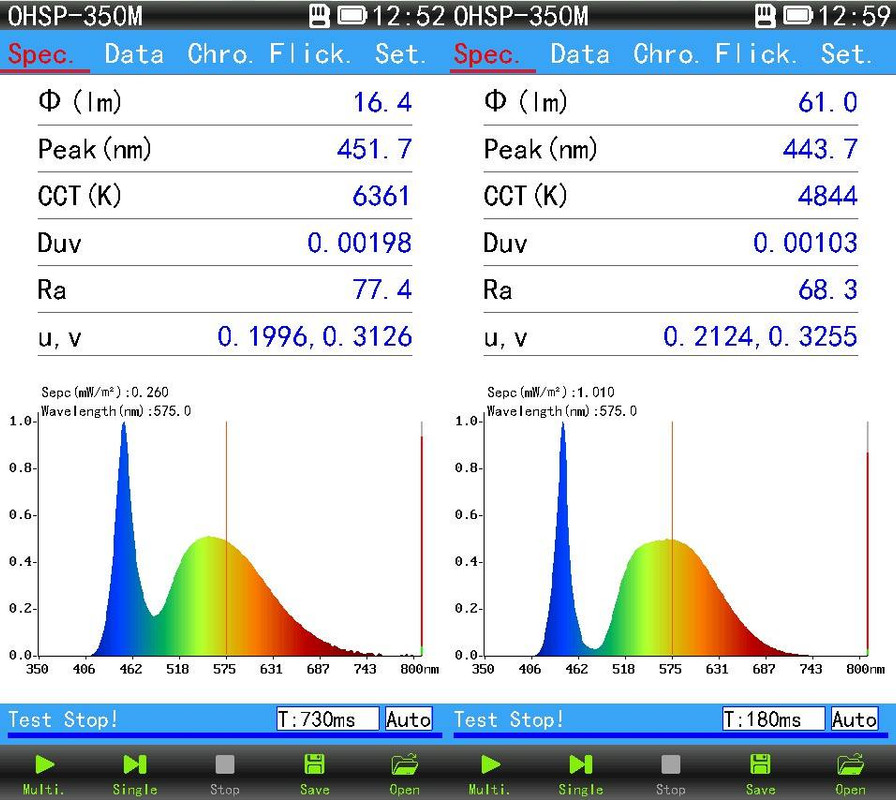Yes it works, solder across the back, Tab is ground. Same with the 4 pins in the rear of the Infineon, (underneath the FET) the large base is ground. It will all become clear when you remove the old FET.
Thanks, I removed the old FET and see what you mean.
I also readied a piece of 30 AWG Kynar wire to replace the trace that I ripped off of the board. :person_facepalming: It’s the one that connects the pin 1 of the FET to R3 and R4.
I’m trying my darnedest to kill this driver! I’ll report back in a couple days when a new FET arrives. ![]()
I reflowed Samsung LH351C emitters on my otherwise stock Emisar D4 with Nichia 219C LEDs that I managed to dedome from heat. I felt that my stock Nichia LEDs were tinted green. I thought that the Samsung LH351C would be better but they seem to have the same green tint maybe not quite as bad. Puts out 2400 lumens OTF at turn on, 2200 at 20 seconds, not very impressive and they seem to heat up just as quickly as the Nichia 219C, probably beacause of the lower forward voltage.
Do you have the original CRI80 219C or the later CRI90 219C model with reduced current?
The later 90CRI model.

What is the diameter of the D1S driver? Based on the picture, I’m guessing 20-22 mm?
ToyKeeper states it is slightly over 22mm.
Thanks. If a replacement driver can’t be acquired from Hank, I think I’ll consider TA 22mm driver.
Petzl Tikka XP
Luxeon RX0HW -> Cree XP-G3 S5 tc 5000k

^ wow, 4 times the output with an emitter swap!
Are those the 5000K 90CI LH351C emitters from Arrow? That is a disappointing first result from this led, at this current a lower performance than 219C and not a great tint.
Correct, it is those same emitters.
I keep hearing about tint issues with the LH351 but the ones I got from Arrow are very consistently pleasing, no green or rosy hues. I got the D model at 5000K and 80 CRI and the 40 I’ve used have been excellent. Price was very good as well at around $2.04 each shipped.
Oh, and Kawi? The large pad under the MOSFET may indeed be the negative lead to the emitter but it definitely is not ground! Let ground touch that and you’re in direct drive from the cell with no modes, bypassing the driver…
Just to be clear for those that are new to all this.
I got the new FET installed on the D1S driver but it’s still one mode.
I tested the switch and it’s good, and the driver acts the same with the switch removed.
For now, I put my D1 driver into the D1S so I can do some comparisons with the GT mini. I made sure to make my MCPCB solder joints flat and toward the outside of the board.
I probed around while I had both drivers out and the connections seem ok.
My trace replacement to pin 4 also tests good. It’s not touching pin 3 as the photo might suggest.
Earlier, I incorrectly referred to the bottom right pin of the stock FET as pin 1. It is actually pin 4.
I thought the dimple in the corner of an IC was a universal marker of pin 1. Apparently not?
BTW, Hank got back to me, and it’s $6 for a replacement driver.
The one with the splootch of white paint? That’d be pin 1. Bottom-right would be pin 4.
They (generally; dunno any exceptions) always go ccw, so a dimple in the corner means it’s pin 1.
Maybe check the diode?
The one with the splootch of white paint? That’d be pin 1. Bottom-right would be pin 4.
That’s the ATtiny85. I dot them with a silver Sharpie to help me align my SOIC clip.
To clarify, I thought it was nearly universal that ‘dimple = pin 1.’
I was surprised to see the Infineon FET not adhere to that.
I did some reading and it appears that it isn’t a hard rule. Some chips don’t even put pin 1 in a corner! ![]()
The rule is: Look it up in the data sheet.
A QFP like the Altera has often a dot in middle.
That wire to the signal pin of the MOSFET is not connected correctly, looks like. The signal pin should be pin 5 (6?) from theMCU. Hence, you only have one mode….
Move that right hand side of the wire up to the (right) end of the 470 resistor and your light should function normally. ![]()
Edit: The three legs on the left , on the MOSFET, are all ground pins. The right hand pin is the signal pin coming from leg 6 of the MCU. You have the signal pin grounded, or powered on a positive trace, but not connected to the MCU for mode changes.


